Teaching about
Asian Pacific
Americans
Critical Perspectives on Asian Pacific Americans Series
Critical Perspectives on Asian Pacific Americans aims to educate and inform readers regarding the Asian Pacific American experience and to critically examine key social, economic, psychological, cultural, and political issues. The series presents books that are theoretically engaging, comparative, and multidisciplinary, and works that reflect the contemporary concerns that are of critical importance to understanding and empowering Asian Pacific Americans.
Books in the Series:
1. Diana Ting Liu Wu, Asian Pacific Americans in the Workplace (1997)
2. Juanita Tamayo Lott, Asian Americans: From Racial Category to Multiple Identities (1998)
3. Jun Xing, Asian America Through the Lens: History, Representations, and Identity (1998)
4. Pyong Gap Min and Rose Kim, editors, Struggle for Ethnic Identity: Narratives by Asian American Professionals (1999)
5. Wendy Ho, In Her Mothers House: The Politics of Asian American Mother-Daughter Writing (1999)
6. Deborah Woo, Glass Ceilings and Asian Americans (2000)
7. Patricia Wong Hall and Victor Hwang, editors, Anti-Asian Violence in North America: Asian American and Asian Canadian Reflections on Hate, Healing and Resistance (2001)
8. Pyong Gap Min and Jung Ha Kim, editors, Religions in Asian America: Building Faith Communities (2002)
9. Pyong Gap Min, editor, The Second Generation: Ethnic Identity among Asian Americans (2002)
10. Susie Lan Cassel, editor, The Chinese in America: A History from the Gold Mountain to the New Millenium (2002)
11. Sucheng Chan, editor, Remapping Asian American History (2003)
12. Monica Chiu, Filthy Fictions: Asian American Literature by Women (2004)
13. Him Mark Lai, Becoming Chinese American: A History of Communities and Institutions (2004)
14. Daniel F. Detzner, Elder Voices: Southeast Asian Families in the United States (2004)
15. Edith Chen and Glenn Omatsu, editors, Teaching about Asian Pacific Americans: Effectiveness Activities, Strategies, and Assignments for Classrooms and Communities (2006)
Teaching about
Asian Pacific
Americans
Effective Activities, Strategies,
and Assignments for
Classrooms and Communities
Edited by
Edith Wen-Chu Chen
and
Glenn Omatsu

ROWMAN & LITTLEFIELD PUBLISHERS, INC.
Published in the United States of America
by Rowman & Littlefield Publishers, Inc.
A wholly owned subsidiary of The Rowman & Littlefield Publishing Group, Inc.
4501 Forbes Boulevard, Suite 200, Lanham, Maryland 20706
www.rowmanlittlefield.com
P.O. Box 317, Oxford OX2 9RU, UK
Copyright 2006 by Rowman & Littlefield Publishers, Inc.
All rights reserved. No part of this publication may be reproduced, stored in a retrieval system, or transmitted in any form or by any means, electronic, mechanical, photocopying, recording, or otherwise, without the prior permission of the publisher.
British Library Cataloguing in Publication Information Available
Library of Congress Cataloging-in-Publication Data
Teaching about Asian Pacific Americans : effective activities, strategies, and assignments for classrooms and communities / Edith Wen-Chu Chen and Glenn Omatsu, editors.
p. cm. (Critical perspectives on Asian Pacific Americans series)
Includes bibliographical references and indes.
ISBN-13: 978-0-7425-5338-5 (pbk. : alk. paper)
1. Asian AmericansStudy and teaching. 2. Pacific Islander AmericansStudy and teaching. 3. Asian AmericansPolitics and government. 4. Pacific Islander AmericansPolitics and government. 5. Asian AmericansSocial conditions. 6. Pacific Islander AmericansSocial Conditions. I. Chen, Edith Wen-Chu, 1966 II. Omatsu, Glenn. III. Series.
E184.A75T43 2006
973'.0495dc22
2005057649
Printed in the United States of America
 The paper used in this publication meets the minimum requirements of American National Standard for Information SciencesPermanence of Paper for Printed Library Materials, ANSI/NISO Z39.48-1992.
The paper used in this publication meets the minimum requirements of American National Standard for Information SciencesPermanence of Paper for Printed Library Materials, ANSI/NISO Z39.48-1992.
To my first teachers, my parents Flora Huang-Chung Hsia Chen and Mo-Shing Chen; my sister Eunice Shin Chen, who is always there for me in ways big and small; and my little niece Elle with whom I am joyfully learning about life all over again.
Edith Wen-Chu Chen
Contents
Edith Wen-Chu Chen and Glenn Omatsu
Mariam Beevi Lam, James Lam, Michael Matsuda, and Diep Tran Orange County Asian & Pacific Islander Community Alliance
Min Zhou and Carl L. Bankston, III
Orange County Asian and Pacific Islander Community Alliance
Tony Osumi
Eiichiro Azuma
Emily Porcincula Lawsin and Joseph A. Galura
Compiled by Emily Porcincula Lawsin
Edith Wen-Chu Chen
Kimiko Kelly, Asian Pacific American Legal Center
Gina Masequesmay
Gina Masequesmay
Steven Masami Ropp
Sweatshop Watch
Sweatshop Watch
Sweatshop Watch
Michi Fu
Dharm P. S. Bhawuk and Vijayan P. Munusamy
Maria Mami Turnmeyer
Masaru Torito
Wayne Au
Haunani-Kay Trask
Vivian Tseng
Sin Yen Ling
National Asian Pacific American Legal Consortium
Amir Hussain
National Asian Pacific American Legal Consortium
Allan Aquino
Allan Aquino
Wayne Au
Glenn Omatsu
Andrew Leong
Glenn Omatsu
Grace J. Yoo
Mariam Beevi Lam, James Lam, Michael Matsuda, and Diep Tran Orange County Asian and Pacific Islander Community Alliance
Ajay T. Nair
W. David Wakefield
Laura Uba
Daniel Hiroyuki Teraguchi
George Uba
Christina Ayala-Alcantar
Sheena Malhotra and Aimee Carrillo Rowe
Glenn Omatsu
Acknowledgments
We would like to extend our appreciation to the many people and institutions that made this book a reality. First, we would like to thank Timothy Fong, the series editor who believed in the book from the very beginning and has continued to provide his unwavering support to this project. This book owes much to Glenn Omatsu, brilliant teacher, well-known community activist, and formerly the long-time associate editor of Amerasia Journal, the nations oldest research journal in Asian American studies. I could not think of a better co-editor for this book. He represents the very best in Asian American studies and continues to serve as an inspiration to us all. Id also like to acknowledge Teresa Kay Williams-Len who has been a dear friend, mentor, colleague, and one of my former teachers. It was as a student in her classroom that I was first introduced to interactive teaching techniques, which are the basis for how I currently approach teaching. I am forever indebted to Shirley Hune, my graduate school mentor, who continues to share with me her gems of wisdom and guidance. Others who have provided invaluable input, feedback, and/or moral support to this project are Gilda Ochoa, Estela Ballon, Kimberly Nettles, Daniel Malpica, Karen Umemoto, Brian Niiya, Dennis Arguelles, Claudia Fajardo-Lira, Benjamin Kudo, Eunai Shrake, Juana Mora, Ayanna Yonemura, Enrique del a Cruz, Mary Kao, Anna Gonzalez, Russell Leong, and Don Nakanishi.
We would like to acknowledge Jessica Gribble, Jenn Nemec, and Rowman & Littlefield Publishers, Inc., who saw this book to its fruition. Heartfelt thanks also goes to Malcolm Kao who patiently and beautifully typeset and re-typeset (many times) the contents of the book.
Next page


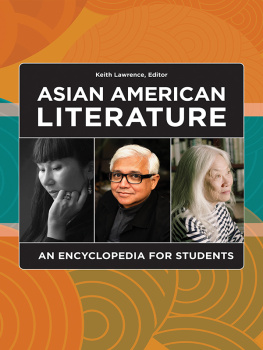
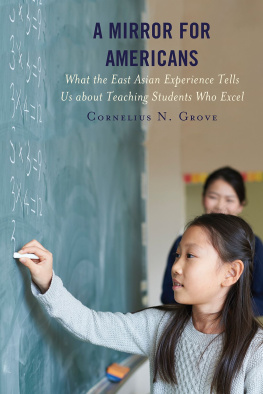

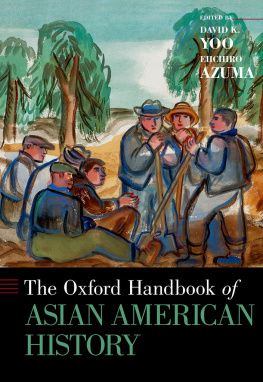

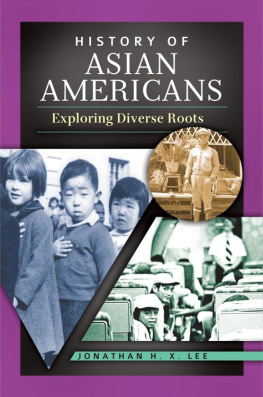
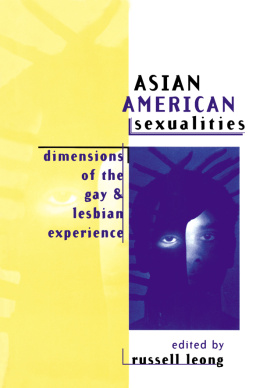

 The paper used in this publication meets the minimum requirements of American National Standard for Information SciencesPermanence of Paper for Printed Library Materials, ANSI/NISO Z39.48-1992.
The paper used in this publication meets the minimum requirements of American National Standard for Information SciencesPermanence of Paper for Printed Library Materials, ANSI/NISO Z39.48-1992.